Frequently Asked Questions
Must the undried Rescobond AA-22S linings be kept dry after air setting?
Will freeze/thaw cycles affect unheated Rescobond AA-22S installations?
Is unheated Rescobond AA-22S affected by steam which is sometimes used as part of the start-up process?
Do Rescobond AA-22S linings need to be dried after air setting to resist shipping damage?
No. Rescobond AA-22S develops most of its strength during the first 24 to 48 hours of air setting -- without drying
An installation is going to be hydrostatically tested. What precautions must be taken with Rescobond AA-22S?
Must the Rescobond AA-22S lining be dried if it is going to be stored before use?
Will undried Rescobond AA-22S absorb moisture from the air like plastics do?
No. Unlike plastics, manufacturing improvements have resulted in a product that will not absorb moisture from the air -- even in the undried state.
How much water do I have to add to a castable?
Why do cement bonded castables have to cure for 24 hours prior to heatup?
When water is mixed with cement-bonded castable and gun mixes, water and calcium aluminate cement will react to form hydrated calcium aluminate cement phases. Within 24 hours after mixing with water, the hydrated calcium aluminate phases will develop the maximum cured strength of a castable or gun mix, and the final hard set of a cement bonded castable. This is important to maximize physical properties during service and aid in the initial dry-out and heat-up procedure.
What is a low cement castable?
A low cement castable is a clay alumina castable that contains less than 2.5% CaO (lime).
Can any type of water be used to mix with castables and gun mixes?
What is the best method to mix castables?
Mixing and user instructions are available for castables and gun mixes.
What is the best practice to install monolithic products in cold weather?
What are the differences between a cement bonded monolithic and a non-cement monolithic product?
The difference is that cement bonded monolithics contain a calcium aluminate cement as the bonding phase. Non-cement bonded monolithic products contain chemicals such as phosphates and colloidal silica as bonding phases, without the use of any calcium aluminate cements. There are benefits to both types on bonding phases but Resco offers cement bonded and non-cement bonded castables.
What is the best practice to install monolithic products in hot weather?
During hot weather, the refractory lining and the applied surface should be kept at a temperature below 95°F (35°C) during application, curing, and right before the start of the dry-out/heat-up procedure. Cold or cool water should be used when installing in hot weather. The installation equipment and installation area should be shaded from direct sun exposure. Installation at night should be considered. In hot weather conditions, dry monolithic products should be placed in shady, cool areas; out of direct sunlight. Measure material temperature for best results. Refrigerated truck vans have been successfully used to cool dry monolithics to within the ideal temperature range prior to installation.
What are the best practices to store monolithic products?
Refractory monolithics (dry castables and gun mixes, basic castables and gun mixes, plastics, wet and dry mortars, liquid seals, precast shapes) should be stored in a dry, covered, weather-protected location, such as a permanent warehouse, and placed on a concrete slab, asphalt pad, or other impermeable surfaces. The product should be stored on the original pallets (with stretch wrap or original packaging intact, when applicable) but elevated from the surface to allow air circulation. Care should be taken to avoid high humidity locations where moisture can collect under the plastic pallet wrapping.
Castable refractories should NOT be stored on grass, soil, or other non-compacted surface or any area where moisture can collect, stand, or come in contact with the refractory or refractory packaging.
Refractory bags or containers showing evidence of damage, or being previously opened, should not be used and should be discarded. Bags containing dry refractory that is agglomerated, containing hard lumps, or have evidence of water stains should not be used and should be discarded. Hard lumps indicate that the dry refractory has come into contact and reacted with water.
Ideal air and material temperature range during storage is 50°F (10°C) to 80°F (27°C) for all refractory monolithic products.
Dry monolithic products should be stored in unopened bags or containers and on the original shipping pallets. Bags or containers showing evidence of damage or being previously opened should NOT be used and should be discarded. Bags containing dry refractory that is agglomerated, containing hard lumps, or that have evidence of water stains should NOT be used and should be discarded. Hard lumps in the bag indicate that the dry monolithic refractory has come into contact with moisture.
How do I dry-out and heat-up a monolithic product after it is installed?
If the dry-out and heat-up of refractory monolithic lining is complicated or complex, it would be best to hire a professional refractory heat-up company.
What does “predampen” mean when referring to gun mixes?
When shotcreting, what are Resco's shotcrete activators?
The preferred RESCO shotcrete activator is RESCO SC-1, which is a liquid polymer. RESCO SC-1 can be used to shotcrete dense, low cement pumpable castables and pumpable insulating castable. It is effective when shotcreting sidewalls and overhead areas.
When shotcreting EZ CUBED products, a sodium nitrite solution in water has shown to be an effective shotcrete activator.
